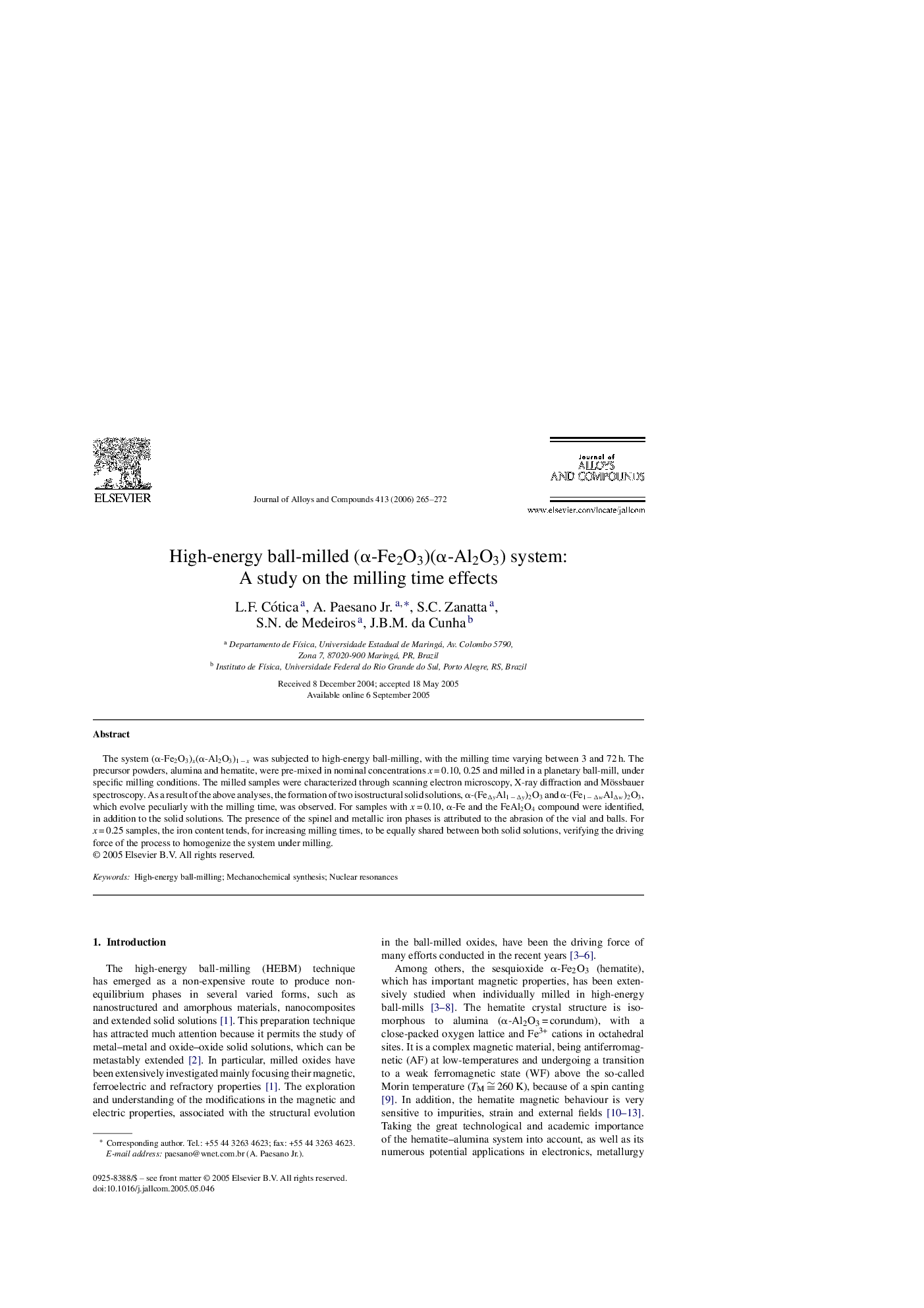| Article ID | Journal | Published Year | Pages | File Type |
|---|---|---|---|---|
| 1627961 | Journal of Alloys and Compounds | 2006 | 8 Pages |
The system (α-Fe2O3)x(α-Al2O3)1 − x was subjected to high-energy ball-milling, with the milling time varying between 3 and 72 h. The precursor powders, alumina and hematite, were pre-mixed in nominal concentrations x = 0.10, 0.25 and milled in a planetary ball-mill, under specific milling conditions. The milled samples were characterized through scanning electron microscopy, X-ray diffraction and Mössbauer spectroscopy. As a result of the above analyses, the formation of two isostructural solid solutions, α-(FeΔyAl1 − Δy)2O3 and α-(Fe1 − ΔwAlΔw)2O3, which evolve peculiarly with the milling time, was observed. For samples with x = 0.10, α-Fe and the FeAl2O4 compound were identified, in addition to the solid solutions. The presence of the spinel and metallic iron phases is attributed to the abrasion of the vial and balls. For x = 0.25 samples, the iron content tends, for increasing milling times, to be equally shared between both solid solutions, verifying the driving force of the process to homogenize the system under milling.
